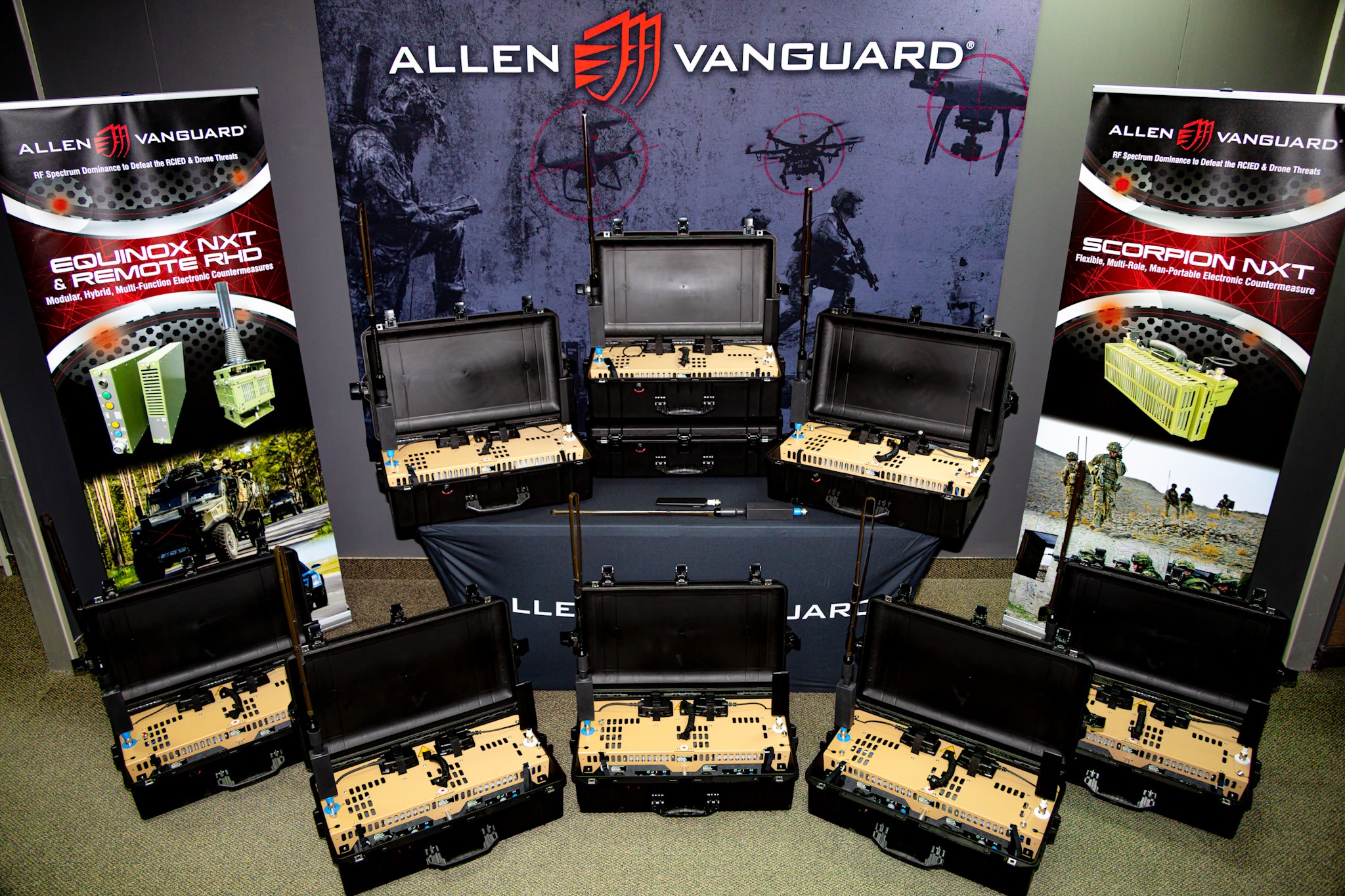Allen-Vanguard delivers first TURMOIL radio frequency decoy
Allen-Vanguard has delivered a set of its TURMOIL radio frequency decoy to a NATO customer, marking the company’s move firmly into the electronic warfare (EW) space, according to a 3rd April company press release.
TURMOIL accurately emulates the radio frequency signals of friendly forces helping to complicate and distract enemy EW forces and capabilities, the press release states. The nature of the system and its intended use make it difficult to say much more, however.
Allen-Vanguard has a track record of developing and providing counter-drone and IED capabilities using radio frequency jammers. It has also developed a radio frequency processor called NXT, which is designed to help armed forces make sense of the electromagnetic spectrum and work to understand the wide array of signals that might be present on a modern battlefield.
The delivery of TURMOIL marks a new chapter in the company’s development as it moves firmly into the EW space by offering traditional capabilities that can be used in large-scale combat. “I am extremely pleased that Allen-Vanguard has entered the EW arena with this new product, not only because it meets a customer’s specific requirements but it clearly demonstrates how we at Allen-Vanguard can quickly and effectively apply our existing knowledge and skills to deliver success in new areas of operation,” Bobby Strawbridge, President of Allen-Vanguard said.
By emitting radio frequency signals that are identical to friendly radios, decoys can improve survivability and complicate an enemy’s understanding of the battlespace. They work because most EW involves understanding and monitoring radio signals – how strong are they, what frequency are they operating in, is there a collection of signals in one place – and so on.
Generally speaking, tactical EW in the land domain is not involved in intercepting radio traffic to listen to what is being said. This is not always the case and ISAF EW teams in Afghanistan routinely intercepted Taliban conversations to monitor what they were planning to do. Russian forces fighting in Ukraine have also made surprisingly regular use of unencrypted radios to communicate. This has enabled Ukrainian EW operators and even radio hobbyists to listen into their conversations.
A NATO force, however, would hopefully go to battle with its encryption established and robust radio networks that would diminish the value of trying to intercept and listen to the radio traffic. With encryption in place, an adversary would be limited to trying to understand the opposing order of battle and likely command post locations through signal clusters and frequency types. In this context, a system like the TURMOIL radio frequency decoy would add signals to the enemy operator’s screen, he would then have to discern whether or not they were real signals or fake ones and build that awareness into his overall understanding of the electromagnetic spectrum in his area, creating uncertainty, as well as potentially false targets, and slowing the process down.
Calibre comment
Russian forces rely extensively on EW as a means to degrade an opponent’s radio network. Like their Soviet predecessors, Russian planners understand that C4ISR plays a key role in shaping and enabling the way that NATO forces fight, and that without them, NATO would struggle to bring its systems together in time and place. Because of this understanding, the Russian Ground Forces have EW capabilities available to most echelons and even have EW brigades that seem to focus on air defence. Using systems to geolocate radio frequency signals, Russian units have been known to fire simply on the supposed location of an emitting radio or drone control station. Moreover, the signal profile of a NATO command post is likely easily recognisable to a trained EW operator, which means that working to hide such a high value target in amongst noise generated from decoys or other systems is a good way to improve survivability.

Sign Up for Updates!
Get insider news, tips, and updates. No spam, just the good stuff!






